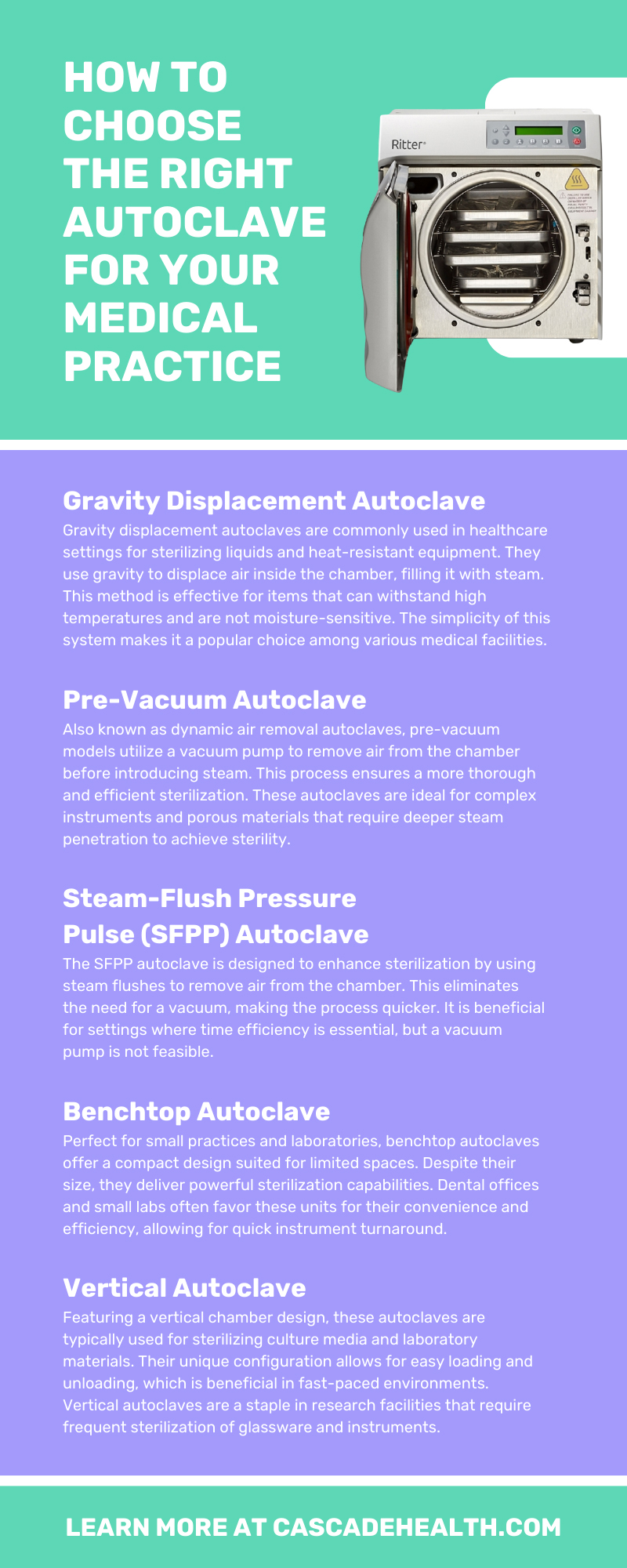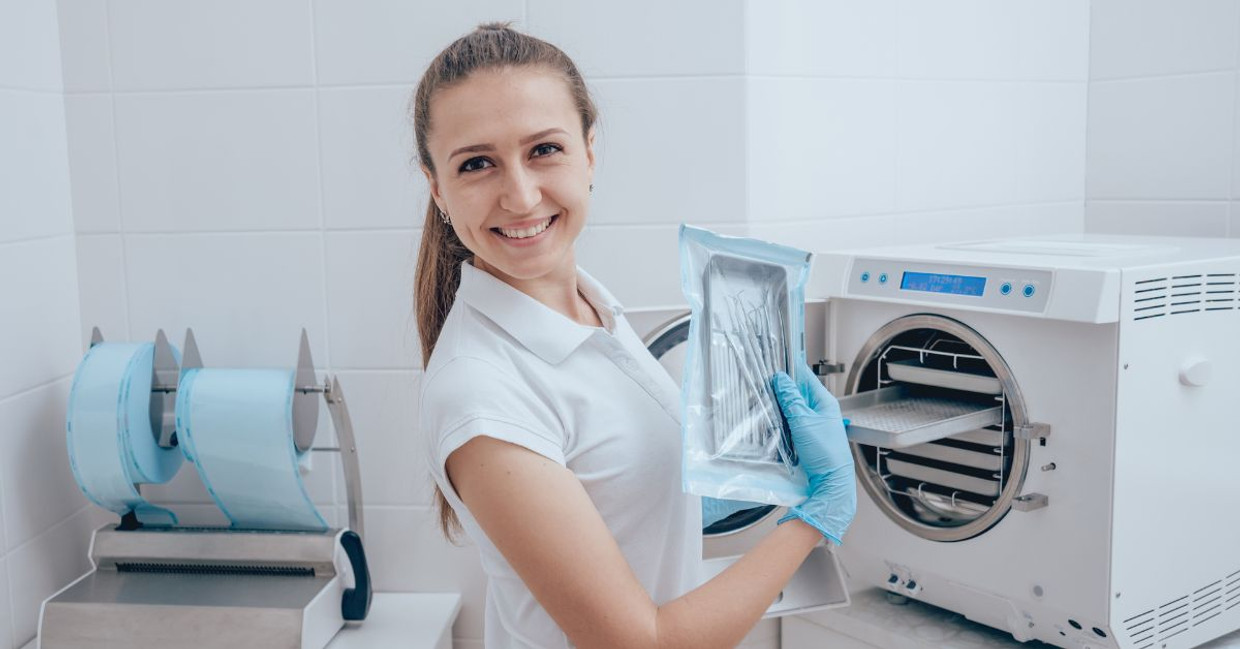How To Choose the Right Autoclave for Your Medical Practice
In the medical field, ensuring the highest hygiene and safety standards is nonnegotiable. Central to maintaining these standards is the use of autoclaves. An efficient sterilization process is crucial whether you run a bustling hospital or a midwife practice. We’ll discuss how to choose the right autoclave for your medical practice, helping you make a decision that ensures your patients’ safety and complies with health regulations.
The Importance of Autoclaves in Healthcare
Autoclaves play a fundamental role in healthcare by providing a reliable method of sterilizing medical instruments. Their ability to eradicate all microbial life forms, including spores, makes autoclaves indispensable in preventing infections.
For medical professionals and midwives, tool sterility directly impacts patient care quality. Autoclaves help meet the stringent hygiene standards required in healthcare settings and offer peace of mind that patients will receive safe and effective care.
In midwife practices, where the intimacy of care and personal touch is paramount, the need for sterilized instruments is critical. These environments often involve handling delicate tools that require precision sterilization without compromising integrity. Therefore, selecting the right autoclave is vital in ensuring that these practices run smoothly and safely, supporting the well-being of practitioners and patients.
Types of Autoclaves
There are several autoclave types available, each designed to suit specific healthcare needs. Understanding the different types can help you pick the best fit for your practice.
Gravity Displacement Autoclave
Gravity displacement autoclaves are commonly used in healthcare settings for sterilizing liquids and heat-resistant equipment. They use gravity to displace air inside the chamber, filling it with steam. This method is effective for items that can withstand high temperatures and are not moisture-sensitive. The simplicity of this system makes it a popular choice among various medical facilities.
Pre-Vacuum Autoclave
Also known as dynamic air removal autoclaves, pre-vacuum models utilize a vacuum pump to remove air from the chamber before introducing steam. This process ensures a more thorough and efficient sterilization. These autoclaves are ideal for complex instruments and porous materials that require deeper steam penetration to achieve sterility.
Steam-Flush Pressure Pulse (SFPP) Autoclave
The SFPP autoclave is designed to enhance sterilization by using steam flushes to remove air from the chamber. This eliminates the need for a vacuum, making the process quicker. It is beneficial for settings where time efficiency is essential, but a vacuum pump is not feasible.
Benchtop Autoclave
Perfect for small practices and laboratories, benchtop autoclaves offer a compact design suited for limited spaces. Despite their size, they deliver powerful sterilization capabilities. Dental offices and small labs often favor these units for their convenience and efficiency, allowing for quick instrument turnaround.
Vertical Autoclave
Featuring a vertical chamber design, these autoclaves are typically used for sterilizing culture media and laboratory materials. Their unique configuration allows for easy loading and unloading, which is beneficial in fast-paced environments. Vertical autoclaves are a staple in research facilities that require frequent sterilization of glassware and instruments.
Horizontal Autoclave
Horizontal autoclaves offer spacious chambers for bulk sterilization in larger facilities with higher volume demands. Hospitals and central sterilization departments frequently use these models because they can handle large loads efficiently, ensuring a continuous supply of sterile instruments.
Portable Autoclave
Designed for flexibility and mobility, portable autoclaves are lightweight and easily transportable. They are ideal for medical settings requiring on-the-go sterilization, such as field clinics or emergency response teams. Their portability does not compromise their efficacy, making them a versatile choice for varied healthcare scenarios.
Key Factors To Consider
When choosing an autoclave for your medical practice, consider key factors to ensure it meets your needs.
Size and Capacity
The size and capacity of the autoclave are crucial. You’ll need to evaluate the volume of instruments you sterilize daily. A unit that accommodates your throughput without causing bottlenecks is essential. Overestimating capacity needs can lead to unnecessary expenses, while underestimating them can disrupt your workflow.
Type of Autoclave
Deciding between a gravity displacement and a vacuum autoclave depends on the items you intend to sterilize. Consider the materials and complexity of instruments in your practice. Complex or porous items typically require a vacuum model for effective sterilization, whereas gravity displacement units can handle simpler heat-resistant items.
Cycle Options
An autoclave with various cycle options offers flexibility in sterilizing different types of instruments. This adaptability benefits practices with diverse equipment, ensuring each item receives the appropriate treatment to maintain its integrity and safety.
Ease of Use
Operational simplicity should not be overlooked. An autoclave with user-friendly controls and interfaces simplifies the sterilization process, reducing the risk of user error. Training staff on complex systems can be time-consuming, so opting for an intuitive model can save time and effort in the long run.
Maintenance and Support
When selecting an autoclave, consider the availability of service support and maintenance requirements. Reliable service options and straightforward maintenance procedures ensure the unit’s long-term reliability, minimizing downtime and maintaining efficiency in your practice.
Safety Features
Safety features are paramount in any autoclave. Ensure the model includes pressure release valves and lock mechanisms to prevent accidents. These features protect both the user and the equipment, ensuring safe operation.
Compliance and Standards
Compliance with health and safety standards is nonnegotiable. Verify that the autoclave meets regional regulations to adhere to industry standards. This ensures patient safety and protects your practice from potential legal issues.
Cost and Budget
Finally, consider the cost and budget constraints when choosing an autoclave. While upfront costs are important, consider potential maintenance expenses and the unit’s overall value. Investing in a reliable autoclave can prevent costly repairs and replacements in the future.
Find the Ideal Autoclave From Cascade Health Care
Choosing the right autoclave for your medical practice is a decision that impacts the quality of care you provide. By following this guide, you can make a choice that ensures efficiency and safety in your practice. Remember, a well-chosen autoclave not only supports your daily operations but also upholds the high patient care standards central to your role as a healthcare provider.
If you’re looking for a trusted source of medical sterilizer machines, check out Cascade Health Care’s selection today. Our range of autoclaves is designed to meet diverse needs and support medical professionals in delivering safe, effective patient care.

Recent Posts
-
Exploring Recent Innovations in Doppler Signal Processing
Doppler technology has become an essential diagnostic tool in modern medicine, enabling healthcare p
-
Exploring Recent Innovations in Doppler Signal Processing
Doppler technology has become an essential diagnostic tool in modern medicine, enabling healthcare p


